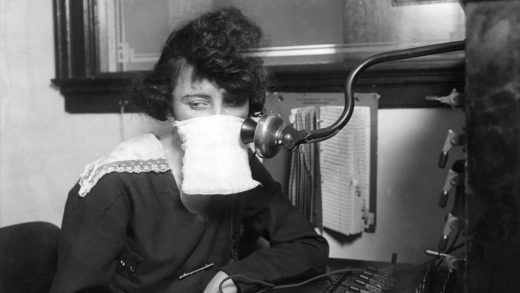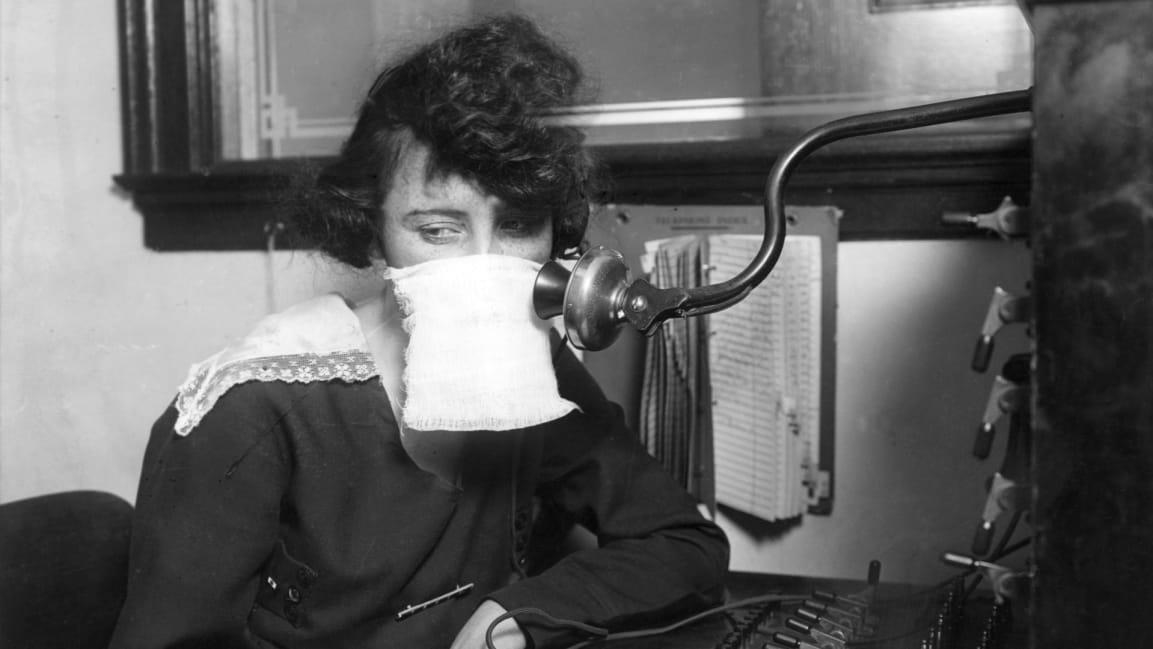How the telephone failed its big test during 1918’s Spanish flu pandemic
Being cooped up at home during a pandemic is not fun. But in 2020, it doesn’t involve being disconnected from the outside world. Actually, thanks to the internet, the greater risk is that you might end up feeling overwhelmed by information.
Now rewind 102 years to the outbreak of the so-called Spanish flu of 1918. In many ways, the upshot was eerily similar to our current conundrum. Local directives shut down everything from kindergartens to saloons; quarantines kept people out of work and away from friends and family. Nobody talked about implementing “social distancing” out of “an abundance of caution,” but they practiced it in spades.
And one piece of technology promised to help life go on: the telephone.
Though it had been 42 years since Alexander Graham Bell made history’s first phone call at his Boston lab, his brainchild was still in the process of becoming ubiquitous. Even in 1920, only 35% of homes in the U.S. had a telephone, according to Statista. But in a time of quarantine—self-imposed or otherwise—the ability to contact outsiders from home was bursting with societal benefits.
Sadly, the telephone system of 1918 itself fell victim to the flu catastrophe rather than transcending it. Looking back at the reasons why is a fascinating reminder of the challenges our ancestors faced as they confronted a health crisis that’s all too relatable.
Cheer up, sick people
By the time the Spanish flu struck, telephone service was already being marketed as a boon to those forced to shelter in place. “People who are in quarantine are not isolated if they have a Bell Telephone,” one AT&T newspaper ad helpfully pointed out. “The Bell Service brings cheer and encouragement to the sick, and is of value in countless other ways.” An illustration depicted a Gibson Girl-style lady merrily gabbing away on a candlestick phone.
That ad has lately been shared on Twitter as a Spanish flu curio. In fact, it dates to 1910 and didn’t reference any quarantine in particular. It only takes a little perusing of early-20th-century newspapers to realize that people were highly conscious of diphtheria, smallpox, spinal meningitis, and other highly contagious menaces. Localities often enforced quarantines; AT&T (and its much smaller competitors) saw a business opportunity.
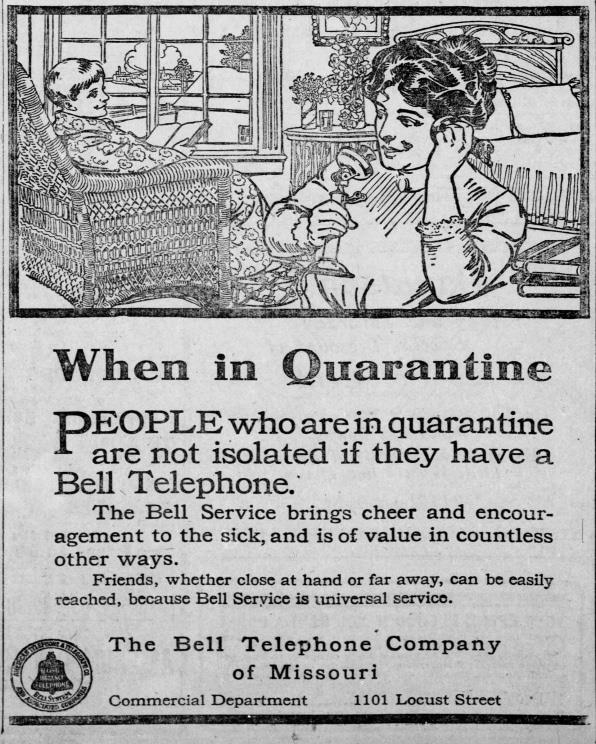
People took advantage of the telephone in ways even phone companies couldn’t have predicted. In January 1918, in a precursor of the current spate of Zoom weddings, a soldier quarantined at Louisiana’s Camp Beauregard, John B. Caldwell, married his sweetheart, Lorene Smith, via telephone. The state’s attorney general grudgingly argued that telephonic weddings, even if possibly legal, were ill advised. His reservations didn’t dissuade the judge who married the happy couple.
For a time, it looked like the telephone might help people carry on their lives with minimal disruption.
Cities and entire states imposed emergency measures similar to those in place today, aiming to flatten the flu’s curve by keeping people apart from each other. Places of business, education, and worship were temporarily closed, and masks were required in some areas.
For a time, it looked like the telephone might help people carry on their lives with minimal disruption. In Holton, Kansas, the local Red Cross distributed placards that local merchants could place in their windows, encouraging customers—especially those who might be ill—to call rather than enter the premises. (Even before the epidemic, telephone ordering was becoming a popular form of commerce—grocery stores, for instance, offered Instacart-like delivery services.)
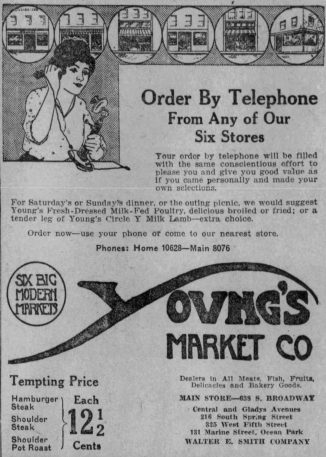
In Long Beach, California, kids who were quarantined at home were guinea pigs for an early form of remote education. “The pupils in the high school there are doing home study work and holding regular telephonic conversation with their instructors,” reported the Oakland Tribune.
The phone also emerged as a means of news dissemination in an era when even radio was not yet a mass medium. (The first news broadcast didn’t take place until 1920.) At the time, the most expedient way to share breaking news was something newspapers called stereopticon bulletins. Both publishing medium and brand-building exercise, they involved projecting news alerts, photos, film clips, and cartoons on giant screens at a paper’s headquarters or other location. Think of them as analog predecessors of the electronic news tickers that survive—just barely—in hubs of activity such as Times Square.
Stereopticon bulletins tended to draw crowds—which, as the flu spread, made them a hazard to public health. So as the U.S. midterm election approached on November 5, 1918, some papers canceled the bulletin service they were planning to offer on election night. Instead, they told readers to phone for results. (Even in the absence of epidemics, people often pestered newspapers for breaking stories: The Sacramento Bee reported getting as many as 1,000 calls a minute on previous election nights.)
Playing recorded messages over phone lines wasn’t yet a thing, so callers reached real live newspaper employees. “The Beacon has a battery of six trunk line telephones and will have [someone] at each one, to give the most important results,” wrote The Wichita [Kansas] Beacon. “Do not congregate in the streets but call up by telephone.”
Operators aren’t standing by
For all the telephone’s theoretical practicality during the epidemic, there was one gotcha that proved overwhelming—maybe not everywhere, but in much of the country. Phone-company infrastructure depended upon the operators (mostly young women) who manually made each connection between the person placing a call and an intended recipient. Automatic dialing, which didn’t require an operator, had been invented in the 19th century but wasn’t yet commonplace.
It should be borne in mind by the public that the telephone switchboard operator is a highly trained worker.”
H.W. Casler, New York Telephone
Telephone operators were just as vulnerable to the Spanish flu as anyone else; maybe even more so than some, since they sat at banks of switchboards in tight quarters, elbow to elbow with any infected coworkers. And their ranks were being depleted by illness at the same time that the flu was increasing call volume.
On October 22, The New York Times reported that 2,000 New York Telephone Company operators, making up almost a third of the workforce, were out sick. Unable to keep up with demand for its service, the company imposed cutbacks—including a 50% reduction in the ability to call from payphones—and mailed cards to customers asking them to limit usage to emergencies.
The Times quoted a New York Telephone executive: “While training schools are maintained by the company, it has not been found possible to fill the place of the absent operators. It should be borne in mind by the public that the telephone switchboard operator is a highly trained worker and cannot be easily replaced.”
Instead of running ads touting the telephone’s usefulness in times of quarantine, AT&T’s Bell System companies and their rivals were reduced to beseeching customers to stay off the phone if at all possible. “The telephone company’s [employees] are, of course, affected as well as [employees] of other concerns and it is becoming increasingly difficult to handle calls in satisfactory manner,” explained Michigan State Telephone in one newspaper ad. Just to emphasize the urgency of the matter, North Carolina’s Piedmont Telephone & Telegraph reminded subscribers that “It is of the utmost importance that calls for doctors, drug stores, and all emergency calls arising from the epidemic be handled efficiently and it is the earnest desire of the company to do this.”
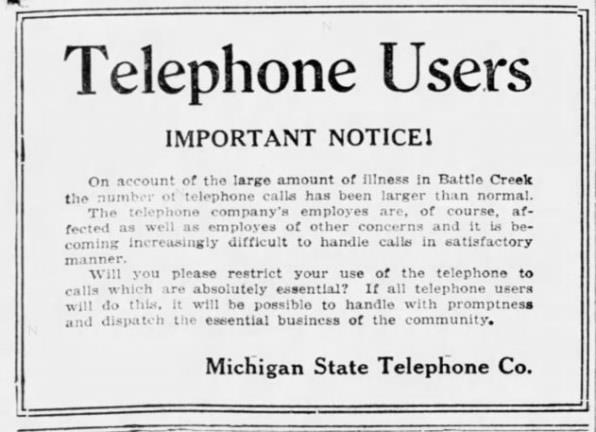
In Florida, a Peninsular Telephone ad mentioned sickly operators and asked customers not to call for the correct time (provided by a human operator, not a machine) “until conditions again are normal.” (Earlier in the year, several Bell System companies had made the same plea as “a necessary war-time request,” suggesting that such calls were a hassle even with a full complement of healthy operators.) A New York Telephone ad even warned that operators might inquire about the nature of a call to ensure that it was truly necessary.
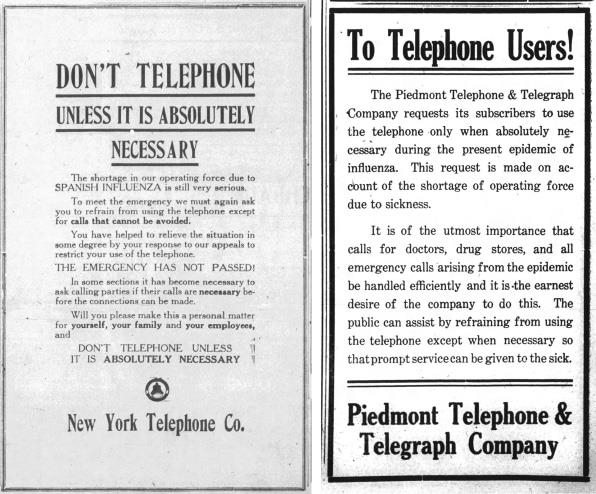
Dinky towns faced the same challenge as bustling metropolises, just on a smaller scale. “Remember that operators are human beings,” wrote the manager of the local phone company in Donaldson, Louisiana, population around 4,000. “Six of our operators are sick with the flu and the service is short handed, while the number of calls is increased, due to the great number of sick calls.”
With telephone systems unable to keep up with typical usage, let alone surges, the idea that they would help housebound people stay informed fell apart, at least in some localities. Three days before the 1918 election, The Sacramento Bee announced, in all caps, that “THE BEE WILL NOT GIVE RETURNS BY TELEPHONE.” Instead, it advised readers to avail themselves of its stereopticon bulletin service. But it did remind them to take precautions: “The City Board of Health says there will be no danger from people congregating in the streets in the open air, provided all wear masks.”
In a way, the phone’s inadequacies during the 1918 pandemic only underscored what a marvel it was. “Less than forty years ago the telephone was an amusing toy, and not for twenty years after that did it cease to be the luxury of the rich,” wrote The New York Times, in an editorial urging readers to make calls only when absolutely necessary. “Now it is become an invaluable implement in daily use, direct or indirect, by all except a small part of our population. Now, nobody can understand how we lived without it, and its value is [certainly] inestimable.”
Today, as the internet mostly manages to keep up with the demands of our sudden work-from-home culture—and despite legitimate concerns about some of the tools we’re embracing—it’s worth pausing to imagine life without it. Or maybe even to wonder what our great-great-grandparents who survived the Spanish flu era—telephone-service disruptions and all—might have made of the technologies we take for granted.
(48)

